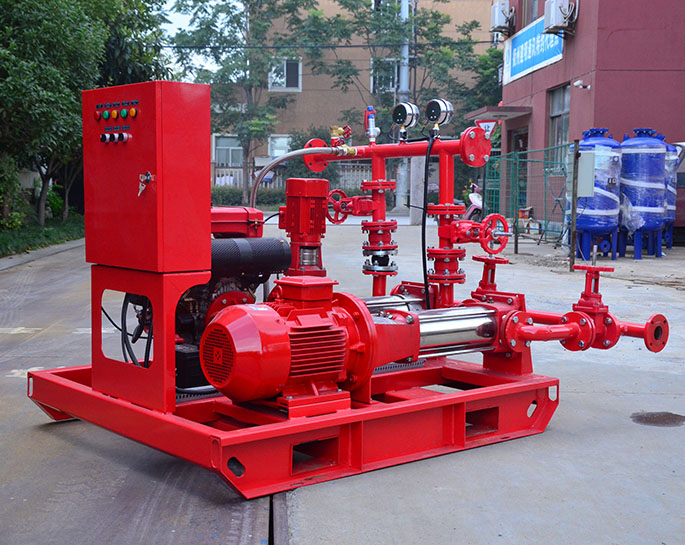Fire Pump Installation Guide
Installing a fire pump properly is essential to ensure its reliability and effectiveness during emergency situations. Below is a general guide for fire pump installation, but always refer to the manufacturer's specific installation instructions and any relevant local codes and regulations:
-
Pre-Installation Preparation:
- Review the manufacturer's installation manual thoroughly.
- Verify that the selected location for the pump meets local regulations and fire protection requirements.
- Ensure that all required permits and approvals are obtained.
-
Foundation and Mounting:
- Prepare a solid and level foundation for the pump and motor assembly.
- Follow the manufacturer's recommendations for mounting and aligning the pump and motor.
- Use appropriate vibration isolation pads or mounts to reduce vibrations and noise transmission.
-
Electrical Connections:
- Ensure that the electrical supply meets the pump's voltage and current requirements.
- Install proper electrical wiring, conduit, and connections according to local electrical codes.
- Include necessary safety devices such as overload protection and disconnect switches.
-
Piping and Valves:
- Install proper suction and discharge piping according to the manufacturer's recommendations and local codes.
- Use the correct pipe sizes to ensure proper flow rates.
- Include isolation valves, check valves, and other required components.
- Ensure that the suction line is free from debris and blockages.
-
Suction Source:
- Connect the pump's suction line to an appropriate water source, such as a water storage tank or a public water supply.
- Ensure that the water source meets the required standards for flow and pressure.
-
Discharge System:
- Connect the pump's discharge line to the fire protection system, which may include sprinklers, standpipes, and hydrants.
- Include the necessary valves, pressure gauges, and other components.
-
Cooling and Ventilation:
- Ensure that the pump room or installation area is adequately ventilated to prevent overheating.
- If the pump is water-cooled, ensure proper water circulation and cooling system installation.
-
Alignment and Coupling:
- Align the pump and motor shafts accurately according to the manufacturer's specifications.
- Install couplings and guards as recommended by the manufacturer.
-
Testing and Commissioning:
- Before final installation, perform hydrostatic and functional tests to ensure the pump's proper operation.
- Conduct flow tests to verify the pump's performance meets required specifications.
-
Safety and Signage:
- Ensure the installation area is well-marked with appropriate signage indicating the location of the fire pump and its controls.
- Comply with safety regulations, including lockout/tagout procedures and electrical safety measures.
-
Documentation and Record Keeping:
- Maintain detailed records of the installation process, including drawings, test results, and any adjustments made.
- Keep manufacturer's manuals and documentation for future reference.
-
Training:
- Train relevant personnel in the operation, maintenance, and emergency procedures related to the fire pump.
-
Final Inspections:
- Schedule a final inspection with relevant authorities to ensure the installation meets all codes and regulations.
Remember that fire pump installation is a critical process that requires careful attention to detail and adherence to safety and regulatory standards. It's advisable to work with qualified professionals who have experience in fire pump installation to ensure the system functions reliably when needed.


.png)
.png)

.png)


